Premium Only Content

Watergate Hearings Day 17: John Mitchell (1973-07-10)
The dark side of history: https://thememoryhole.substack.com/
John Newton Mitchell (September 15, 1913 – November 9, 1988) was the 67th Attorney General of the United States, serving under President Richard Nixon and was chairman of Nixon's 1968 and 1972 presidential campaigns. Prior to that, he had been a municipal bond lawyer and one of Nixon's associates.[1] He was tried and convicted as a result of his involvement in the Watergate scandal.
After his tenure as U.S. Attorney General, he served as chairman of Nixon's 1972 presidential campaign. Due to multiple crimes he committed in the Watergate affair, Mitchell was sentenced to prison in 1977 and served 19 months. As Attorney General, he was noted for personifying the "law-and-order" positions of the Nixon administration, amid several high-profile anti-Vietnam War demonstrations; this generated irony when he became one of very few Cabinet members ever convicted of a crime.
Early life
Mitchell was born in Detroit to Margaret (McMahon) and Joseph C. Mitchell. He grew up in the New York City borough of Queens.[2][3] He graduated from Fordham University in 1935 with a Bachelor of Arts, then earned his law degree from Fordham University School of Law in 1938.[4][5] He served for three years as a naval officer (Lieutenant, Junior Grade) during World War II where he was a PT boat commander.
Except for his period of military service, Mitchell practiced law in New York City from 1938 until 1969 with the firm of Rose, Guthrie, Alexander and Mitchell and earned a reputation as a successful municipal bond lawyer. Richard Nixon was a partner in the firm from 1963 to 1968.
Mitchell's second wife, Martha Mitchell, became a controversial figure, gaining notoriety for her late-night phone calls to reporters in which she accused Nixon of participating in the Watergate cover-up and alleged that he and several of his aides were trying to make her husband the scapegoat for the whole affair.
New York government
Mitchell devised a type of revenue bond called a "moral obligation bond" while serving as bond counsel to New York Governor Nelson Rockefeller in the 1960s. In an effort to get around the voter approval process for increasing state and municipal borrower limits, Mitchell attached language to the offerings that was able to communicate the state's intent to meet the bond payments while not placing it under a legal obligation to do so.[6] Mitchell did not dispute when asked in an interview if the intent of such language was to create a "form of political elitism that bypasses the voter's right to a referendum or an initiative."[7]
Political career
Mitchell is sworn in as Attorney General of the United States, January 22, 1969. Chief Justice Earl Warren administers the oath while President Richard Nixon looks on.
In 1967, the firm of Caldwell, Trimble & Mitchell, where Mitchell was lead partner, merged with Richard Nixon's firm, Nixon, Mudge, Rose, Guthrie, & Alexander. Nixon was then officially in "political retirement" but was quietly organizing a return to politics in the 1968 Presidential Election. Mitchell, with his many contacts in local government, became an important strategic confidant to Nixon, who referred to him as "the heavyweight."[8][9]
Nixon campaign manager
In 1968 John Mitchell agreed to become Nixon's presidential campaign manager. During his successful 1968 campaign, Nixon turned over the details of the day-to-day operations to Mitchell.
Vietnam
Allegedly, Mitchell also played a central role in covert attempts to sabotage the 1968 Paris Peace Accords which could have ended the Vietnam War.[10][11][12][13]
Attorney general
Mitchell, Richard Nixon, J. Edgar Hoover and John Ehrlichman in May 1971
After Nixon became president in January 1969, he appointed Mitchell as Attorney General of the United States while making an unprecedented direct appeal to FBI Director J. Edgar Hoover that the usual background investigation not be conducted.[14] Mitchell remained in office from 1969 until he resigned in 1972 to manage Nixon's reelection campaign.
Law and order
Mitchell believed that the government's need for "law and order" justified restrictions on civil liberties. He advocated the use of wiretaps in national security cases without obtaining a court order (United States v. U.S. District Court) and the right of police to employ the preventive detention of criminal suspects. He brought conspiracy charges against critics of the Vietnam War, likening them to brown shirts of the Nazi era in Germany.
Mitchell expressed a reluctance to involve the Justice Department in some civil rights issues. "The Department of Justice is a law enforcement agency," he told reporters. "It is not the place to carry on a program aimed at curing the ills of society." However, he also told activists, "You will be better advised to watch what we do, not what we say."[15][16][17][18][19][20]
School desegregation
Near the beginning of his administration, Nixon ordered Mitchell to go slow on desegregation of schools in the South, in fulfillment of Nixon's "Southern Strategy" which accused him of focusing on gaining support from Southern white voters. After being instructed by the federal courts that segregation was unconstitutional and that the executive branch was required to enforce the rulings of the courts, Mitchell began to comply, threatening to withhold federal funds from those school systems that were still segregated and threatening legal action against them.
School segregation had been struck down as unconstitutional by a unanimous Supreme Court decision in 1954 (Brown v. Board of Education), but in 1955, the Court ruled that desegregation needed to be accomplished only with "all deliberate speed," [21] which many Southern states interpreted as an invitation to delay. It was not until 1969 that the Supreme Court renounced the "all deliberate speed" rule and declared that further delay in accomplishing desegregation was no longer permissible.[22] As a result, some 70% of black children were still attending segregated schools in 1968 when Nixon became president.[23] By 1972, as a result of President Nixon's policy this percentage had decreased to 8%, a greater decrease than in any of the previous three presidents. Enrollment of black children in desegregated schools rose from 186,000 in 1969 to 3 million in 1970.[24]|[25]
Public safety
From the outset, Mitchell strove to suppress what many Americans saw as major threats to their safety: urban crime, black unrest, and war resistance. He called for the use of "no-knock" warrants for police to enter homes, frisking suspects without a warrant, wiretapping, preventive detention, the use of federal troops to repress crime in the capital, a restructured Supreme Court, and a slowdown in school desegregation. "This country is going so far to the right you won't recognize it," he told a reporter.[26]
There had been national outrage over the 1969 burning Cuyahoga River. President Nixon had signed the National Environmental Policy Act on New Year's Day in 1970, establishing the United States Environmental Protection Agency (EPA). Nixon appointed William Ruckelshaus to head the agency, which opened its doors December 2, 1970. Mitchell gave a Press Conference December 18, 1970: “I would like to call attention to an area of activity that we have not publicly emphasized lately, but which I feel, because of the changing events, deserves your attention. I refer to the pollution control litigation, with particular reference to our work with the new Environmental Protection Agency, now headed by William Ruckelshaus. As in the case of other government departments and agencies, EPA refers civil and criminal suits to the Department of Justice, which determines whether there is a base for prosecution and of course, if we find it so, we proceed with court action.... And today, I would like to announce that we are filing suit this morning against the Jones and Laughlin Steel Corporation for discharging substantial quantities of cyanide into the Cuyahoga River near Cleveland. Mr. Ruckelshaus has said, when he asked the Department to file this suit, that the 180-day notice filed against the company had expired. We are filing a civil suit to seek immediate injunctive relief under the Refuse Act of 1899 and the Federal Water Pollution Act to halt the discharge of these deleterious materials into the river.”[27]
Dirty tricks
In an early sample of the "dirty tricks" that would later mark the 1971–72 campaign, Mitchell approved a $10,000 subsidy to employ an American Nazi Party faction in a bizarre effort to get Alabama Governor George Wallace off the ballots in California. The scheme failed.[26]
Vesco donation obstruction trial
Main article: Committee to Re-elect the President
Former attorney general Mitchell enters the Senate caucus room to testify before the Senate Watergate Committee, 1973
John Mitchell's name was mentioned in a deposition concerning Robert L. Vesco, an international financier who was a fugitive from a federal indictment. Mitchell and Nixon Finance Committee Chairman Maurice H. Stans were indicted in May 1973 on federal charges of obstructing an investigation of Vesco after he made a $200,000 contribution to the Nixon campaign.[28] In April 1974, both men were acquitted in a New York federal district court.[29]
Watergate scandal
Main article: Watergate scandal
In the days immediately after the Watergate break-in of June 17, 1972, Mitchell enlisted former FBI agent Steve King to prevent his wife Martha from learning about the break-in or contacting reporters. While she was on a phone call with journalist Helen Thomas about the break-in, King pulled the phone cord from the wall. Mrs. Mitchell was held against her will in a California hotel room and forcibly sedated by a psychiatrist after a physical struggle with five men that left her needing stitches.[30][31] Nixon aides, in an effort to discredit her, told the press that she had a "drinking problem".[32] Nixon was later to tell interviewer David Frost in 1977 that Martha was a distraction to John Mitchell, such that no one was minding the store, and "If it hadn't been for Martha Mitchell, there'd have been no Watergate."
In 1972, when asked to comment about a forthcoming article[33] that reported that he controlled a political slush fund used for gathering intelligence on the Democrats, he famously uttered an implied threat to reporter Carl Bernstein: "Katie Graham's gonna get her tit[34] caught in a big fat wringer if that's published."[35][36][37]
One of Mitchell's former residences (left) in Georgetown, Washington, D.C.
In July 1973, Mitchell testified before the Senate Watergate Committee where he claimed he had no prior knowledge of the Watergate break-in, which contradicted the testimony of others who appeared before the committee. He admitted that he was briefed on January 27, 1972, while he was the attorney general, by G. Gordon Liddy on Operation Gemstone which proposed numerous illegal activities to support the reelection of President Nixon, including the use of prostitutes, kidnapping, and assaulting antiwar protestors. Mitchell testified he should have thrown Liddy "out of the window". Jeb Stuart Magruder and John Dean testified to the committee that Mitchell later approved electronic surveillance (i.e., bugging telephones) but did not approve of the other proposed activities.
Tape recordings made by President Nixon and the testimony of others involved confirmed that Mitchell had participated in meetings to plan the break-in of the Democratic Party's national headquarters in the Watergate Office Building.[38] In addition, he had met with the president on at least three occasions to cover up White House involvement, using illegal means such as witness tampering, after the burglars were discovered and arrested.[39]
On January 1, 1975, Mitchell, who was represented by the criminal defense attorney William G. Hundley, was found guilty of conspiracy, obstruction of justice, and perjury.[40] Mitchell was sentenced on February 21 to two-and-a-half to eight years in prison for his role in the Watergate break-in and cover-up, which he dubbed the "White House horrors".[41] As a result of the conviction, Mitchell was disbarred from the practice of law in New York.[42] The sentence was later reduced to one-to-four years by United States District Court Judge John J. Sirica. Mitchell served only 19 months of his sentence at Federal Prison Camp, Montgomery (in Maxwell Air Force Base) in Montgomery, Alabama, a minimum-security prison, before being released on parole for medical reasons.[43]
Death
Around 5:00 pm on November 9, 1988, Mitchell collapsed from a heart attack on the sidewalk in front of 2812 N Street NW in the Georgetown area of Washington, D.C., and died that evening at George Washington University Hospital.[44] He was buried with full military honors at Arlington National Cemetery. He was eligible for the honor because of his World War II Naval service and having held the cabinet post of Attorney General.
In popular culture
John Randolph had an uncredited role in the 1976 film All the President's Men as the voice of John Mitchell.
Randolph portrayed Mitchell again, this time in a credited role, in "Blind Ambition"
Mitchell's archival footages are shown in Slow Burn.
He was portrayed by E. G. Marshall in Oliver Stone's 1995 film Nixon.
He was portrayed by John Doman in the 2020 film The Trial of the Chicago 7.
Mitchell is portrayed by Sean Penn in the 2022 limited series Gaslit.[45]
He was portrayed by John Carroll Lynch in the 2023 miniseries White House Plumbers (miniseries).
References
Perlstein, Rick (2008). Nixonland: The Rise of a President and the Fracturing of America. Scribner. p. 175. ISBN 978-0-7432-4302-5.
"United States Census 1930", United States census, 1930; Queens, New York; page 4b, line 51, enumeration district 41-325.
"United States Census 1940", United States census, 1940; Queens, New York; page 5a, line 28, enumeration district 41-1147a.
"John N. Mitchell biography". Department of Justice. October 24, 2014. Retrieved January 21, 2017.
"John N. Mitchell Dies at 75; Major Figure in Watergate". New York Times. November 10, 1988. Retrieved January 21, 2017.
Mysak, Joseph; Marlin, George (1991). Fiscal Administration: Analysis and Applications for the Public Sector. Pacific Grove, California: Brooks/Cole. ISBN 978-0155058552.
Kittredge, William P.; Kreutzer, David W. (2001). "We Only Pay the Bills: The Ongoing Effort to Disfranchise Virginia's Voters". Abingdon, Virginia: The Virginia Institute for Public Policy. Archived from the original on May 30, 2009. Retrieved December 12, 2009.
"Attorney General: John Newton Mitchell". www.justice.gov. October 23, 2014. Retrieved January 23, 2022.
Perlstein, Rick (2001). Before the storm : Barry Goldwater and the unmaking of the American consensus (1st ed.). New York City: Hill and Wang. ISBN 9780809028580.
Robert "KC" Johnson. “Did Nixon Commit Treason in 1968? What The New LBJ Tapes Reveal”. History News Network, January 26, 2009. Transcript from audio recording on YouTube of President Lyndon Johnson: "The next thing that we got our teeth in was one of his associates — a fellow named Mitchell, who is running his campaign, who's the real Sherman Adams (Eisenhower's chief of staff) of the operation, in effect said to a businessman that 'we're going to handle this like we handled the Fortas matter, unquote. We're going to frustrate the President by saying to the South Vietnamese, and the Koreans, and the Thailanders [sic], "Beware of Johnson."' 'At the same time, we're going to say to Hanoi, "I [Nixon] can make a better deal than he (Johnson) has, because I'm fresh and new, and I don't have to demand as much as he does in the light of past positions."'"
Hersh, Seymour (1983). The Price of Power: Kissinger in the Nixon White House. Summit Books. ""A few days before the election, she wrote, Mitchell telephoned with an urgent message. 'Anna,' (Chennault) she quotes him as saying. 'I'm speaking on behalf of Mr. Nixon. It's very important that our Vietnamese friends understand our Republican position and I hope you have made that clear to them.'"."
Jules Witcover. “The Making of an Ink-Stained Wretch: Half a Century Pounding the Political Beat”[permanent dead link]. Johns Hopkins University Press, 2005, p131. "I tracked down Anna Chennault (...) she insisted she had acted under instructions from the Nixon campaign in contacting the Saigon regime. 'The only people who knew about the whole operation,' she told me, 'were Nixon, John Mitchell and John Tower [senator from Texas and Nixon campaign figure], and they're all dead. But they knew what I was doing. Anyone who knows about these thing knows I was getting orders to do these thing. I couldn't do anything without instructions.'".
Clifford, Clark M.; Holbrooke, Richard C. (1991). Counsel to the President: A Memoir. New York City: Random House. p. 582. ISBN 9780394569956. "It was not difficult for Ambassador Diem to pass information to Anna Chennault, who was in contact with John Mitchell, she said later, 'at least once a day.'"
Gentry, Curt (1991). J. Edgar Hoover: The Man And The Secrets. New York City: W. W. Norton. p. 616. ISBN 0-393-02404-0.
Safire, William (November 14, 1988). "Watch What We Do". The New York Times. Retrieved July 22, 2017.
Billington, James H. (2010). Respectfully Quoted: A Dictionary of Quotations. Chelmsford, Massachusetts: Courier Corporation. ISBN 9780486472881. Retrieved July 22, 2017 – via Google Books.
Bartlett, Bruce (January 8, 2008). Wrong on Race: The Democratic Party's Buried Past. New York City: Palgrave Macmillan. ISBN 9780230611382. Retrieved July 22, 2017 – via Google Books.
Smith, Robert Charles (July 22, 1996). We Have No Leaders: African Americans in the Post-Civil Rights Era. New York City: SUNY Press. ISBN 9780791431351. Retrieved July 22, 2017 – via Google Books.
Rosen, James (May 20, 2008). The Strong Man: John Mitchell and the Secrets of Watergate. New York City: Knopf Doubleday. ISBN 9780385525466. Retrieved July 22, 2017 – via Google Books.
Rawson, Hugh; Miner, Margaret (2006). The Oxford Dictionary of American Quotations. New York City: Oxford University Press USA. ISBN 9780195168235. Retrieved July 22, 2017 – via Google Books.
Brown v. Board of Education, 349 U.S. 294 (1955)
See, e.g., Alexander v. Holmes County Board of Education, 396 U.S. 19 (1969)
Karl, Jonathan (May 24, 2008). "Reconsidering John Mitchell". Wall Street Journal. Retrieved July 22, 2017.
Marlin, George (May 9, 2008). "Reviewing The Strong Man: John Mitchell and the Secrets of Watergate". Human Events. Archived from the original on August 28, 2016. Retrieved July 22, 2017.
Jacoby, Tamar (May 2002). "A Surprise, but not a Success". Atlantic. Retrieved May 2, 2023.
"John N. Mitchell Dies at 75; Major Figure in Watergate". The New York Times. November 10, 1988.
"Press Conference Attorney John Mitchell 12-18-1970" (PDF).
Woodward, Bob; Bernstein, Carl (1974). All The President's Men. New York City: Simon and Schuster. pp. 284n, 335.
Woodward, Bob; Bernstein, Carl (1976). The Final Days. New York City: Simon and Schuster. p. 138. ISBN 0-671-22298-8.
Reeves, Richard (2002). President Nixon : alone in the White House (1st Touchstone ed. 2002. ed.). New York: Simon & Schuster. pp. 511. ISBN 0-7432-2719-0.
McLendon, Winzola (1979). Martha: The Life of Martha Mitchell. Random House. ISBN 9780394411248.
Olson, Keith (2003). Watergate: The Presidential Scandal That Shook America.
"WashingtonPost.com: Mitchell Controlled Secret GOP Fund". www.washingtonpost.com.
The words "her tit" were not included in the newspaper article.
Graham, Katharine (July 22, 1997). Personal History. Alfred A. Knopf. p. 465. ISBN 9780394585857. Retrieved July 22, 2017 – via Internet Archive.
Graham, Katharine (January 28, 1997). "The Watergate Watershed -- A Turning Point for a Nation and a Newspaper". The Washington Post. Retrieved July 22, 2017.
Woodward & Bernstein (1974) p. 105
United States Congress House Comm on the Judiciary (July 23, 1974). Impeachment Inquiry Books I-III. U.S. Government Printing Office.
John Mitchell | Attorney General of the United States Encyclopaedia Britannica. Retrieved July 9, 2020.
"John N. Mitchell Dies at 75; Major Figure in Watergate". The New York Times. November 10, 1988. Retrieved September 4, 2021.
"Mitchell, Haldeman, Ehrlichman are sentenced to 2½ to 8 years, Mardian to 10 months to 3 years". The New York Times. February 22, 1975. Retrieved September 4, 2021.
See Mitchell v. Association of the Bar, 40 N.Y.2d 153, 351 N.E.2d 743, 386 N.Y.S.2d 95 (1976)
"John N. Mitchell, Principal in Watergate, Dies at 75". The Washington Post. December 4, 1997. Retrieved May 7, 2010.
Times, Special to the New York (November 10, 1988). "John N. Mitchell Dies at 75; Major Figure in Watergate". The New York Times. ISSN 0362-4331. Retrieved June 15, 2023.
Maas, Jennifer (February 2, 2022). "'Gaslit' Teaser: Sean Penn and Julia Roberts Transform Into John and Martha Mitchell for Starz Watergate Series". Variety.
Further reading
Rosen, James (2008). The Strong Man: John Mitchell and the Secrets of Watergate. New York: Doubleday. ISBN 978-0-385-50864-3.
External links
Wikimedia Commons has media related to John N. Mitchell.
Wikiquote has quotations related to John N. Mitchell.
Watergate trial sketches
The Washington Post obituary
Legal offices
Preceded by
Ramsey Clark
United States Attorney General
1969–1972 Succeeded by
Richard Kleindienst
vte
United States Attorneys General
Randolph Bradford Lee Lincoln Breckinridge Rodney Pinkney Rush Wirt Berrien Taney Butler Grundy Gilpin Crittenden Legaré Nelson Mason Clifford Toucey Johnson Crittenden Cushing Black Stanton Bates Speed Stanbery Evarts Hoar Akerman Williams Pierrepont Taft Devens MacVeagh Brewster A. Garland Miller Olney Harmon McKenna Griggs Knox Moody Bonaparte Wickersham McReynolds Gregory Palmer Daugherty Stone Sargent W. D. Mitchell Cummings Murphy Jackson Biddle T. C. Clark McGrath McGranery Brownell Rogers Kennedy Katzenbach R. Clark J. N. Mitchell Kleindienst Richardson Saxbe Levi Bell Civiletti Smith Meese Thornburgh Barr Reno Ashcroft Gonzales Mukasey Holder Lynch Sessions Barr M. Garland
Seal of the United States Department of Justice
vte
Cabinet of President Richard Nixon (1969–1974)
Cabinet
Vice President
Spiro Agnew (1969–1973) None (1973) Gerald Ford (1973–1974)
Secretary of State
William P. Rogers (1969–1973) Henry Kissinger (1973–1974)
Secretary of the Treasury
David M. Kennedy (1969–1971) John Connally (1971–1972) George Shultz (1972–1974) William E. Simon (1974)
Secretary of Defense
Melvin Laird (1969–1973) Elliot Richardson (1973) James R. Schlesinger (1973–1974)
Attorney General
John N. Mitchell (1969–1972) Richard Kleindienst (1972–1973) Elliot Richardson (1973) William B. Saxbe (1974)
Postmaster General
Winton M. Blount (1969–1971)
Secretary of the Interior
Wally Hickel (1969–1970) Rogers Morton (1971–1974)
Secretary of Agriculture
Clifford M. Hardin (1969–1971) Earl Butz (1971–1974)
Secretary of Commerce
Maurice Stans (1969–1972) Peter G. Peterson (1972–1973) Frederick B. Dent (1973–1974)
Secretary of Labor
George Shultz (1969–1970) James Day Hodgson (1970–1973) Peter J. Brennan (1973–1974)
Secretary of Health, Education, and Welfare
Robert Finch (1969–1970) Elliot Richardson (1970–1973) Caspar Weinberger (1973–1974)
Secretary of Housing and Urban Development
George W. Romney (1969–1973) James Thomas Lynn (1973–1974)
Secretary of Transportation
John A. Volpe (1969–1973) Claude Brinegar (1973–1974)
Cabinet-level
Director of the Bureau of the Budget
Robert P. Mayo (1969–1970)
Director of the Office of Management and Budget
George Shultz (1970–1972) Caspar Weinberger (1972–1973) Roy Ash (1973–1974)
Ambassador to the United Nations
Charles Yost (1969–1971) George H. W. Bush (1971–1973) John A. Scali (1973–1974)
Counselor to the President
Arthur F. Burns (1969) Daniel Patrick Moynihan (1969–1970) Bryce Harlow (1969–1970) Robert Finch (1970–1972) Donald Rumsfeld (1970–1971) Anne L. Armstrong (1973–1974) Dean Burch (1974) Kenneth Rush (1974)
Authority control databases Edit this at Wikidata
International
FAST ISNI VIAF
National
Germany Israel United States Netherlands
Other
NARA SNAC
Categories:
1913 births1988 deaths20th-century American lawyersAmerican campaign managersUnited States Navy personnel of World War IIBurials at Arlington National CemeteryFordham University School of Law alumniJamaica High School (New York City) alumniLawyers from DetroitMembers of the Committee for the Re-Election of the PresidentMilitary personnel from DetroitDisbarred New York (state) lawyersNew York (state) politicians convicted of crimesNixon administration cabinet membersNo-knock warrant20th-century American politiciansAmerican people convicted of obstruction of justiceAmerican people convicted of perjuryRecipients of the Silver StarUnited States Assistant Attorneys GeneralUnited States Attorneys GeneralUnited States Navy officersPeople convicted in the Watergate scandalLawyers disbarred in the Watergate scandalNew York (state) Republicans
-
 31:00
31:00
The Memory Hole
8 months agoThe Perils of a Life of Dirty Tricks in the CIA (1978)
1.89K -
 1:59:29
1:59:29
Tim Pool
3 hours agoIsrael VS Palestine DEBATE, Misfit Patriot VS Rathbone | The Culture War with Tim Pool
94.6K139 -
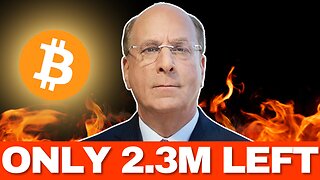 DVR
DVR
Simply Bitcoin
2 hours ago $0.79 earnedNEW DATA: FORGET The CRASH The Bitcoin Supply SHOCK is ACCELERATING | EP 1321
5.6K -
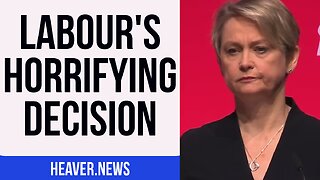 4:22
4:22
Michael Heaver
2 hours agoLabour Make DISGUSTING Decision Against England
441 -
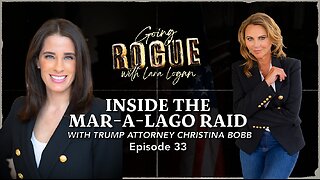 1:05:42
1:05:42
Lara Logan
15 hours agoINSIDE THE MAR-A-LAGO RAID with Trump Attorney Christina Bobb | Episode 33
17.3K3 -
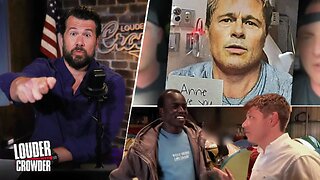 1:38:45
1:38:45
Steven Crowder
4 hours agoAI Celebs Just Scammed Women out of Millions & Premium Interview w/ Patrick Christys
201K158 -
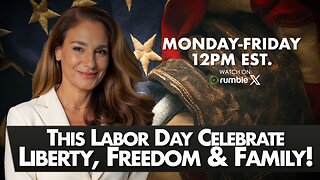 43:48
43:48
The Mel K Show
3 hours agoMORNINGS WITH MEL K -This Labor Day Celebrate Liberty, Freedom & Family! 8-29-25
14.2K3 -
 59:02
59:02
The Shannon Joy Show
4 hours ago🔥🔥The Butchers At Hilo Benioff Hospital Hawaii - Mom Subjected To Forced C-Section & Abuse🔥🔥
20.1K3 -
 41:26
41:26
daniellesmithab
2 hours agoBetter, Faster, Smarter Access to Government Services
8.06K3 -
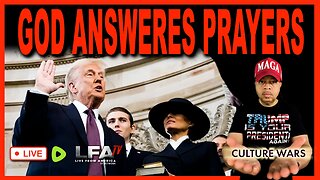 LIVE
LIVE
LFA TV
7 hours agoLFA TV ALL DAY STREAM - FRIDAY 8/29/25
2,734 watching